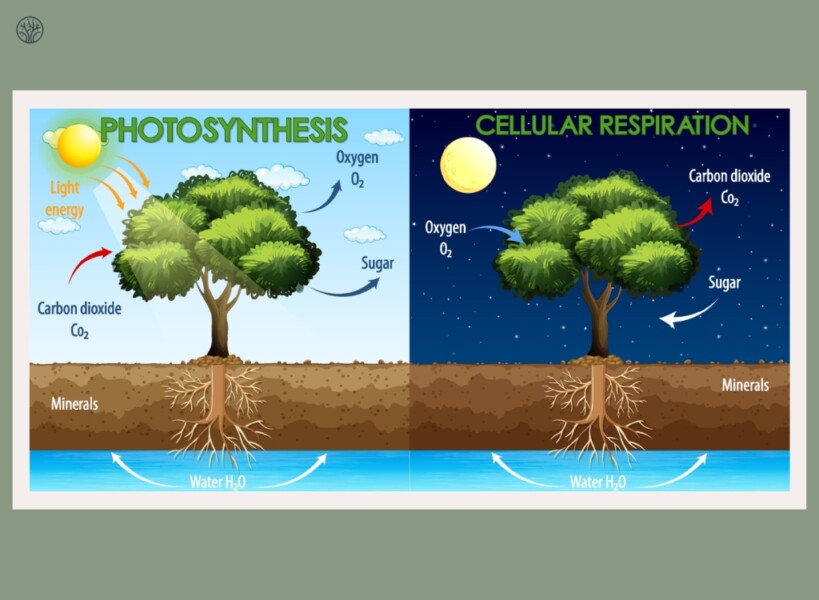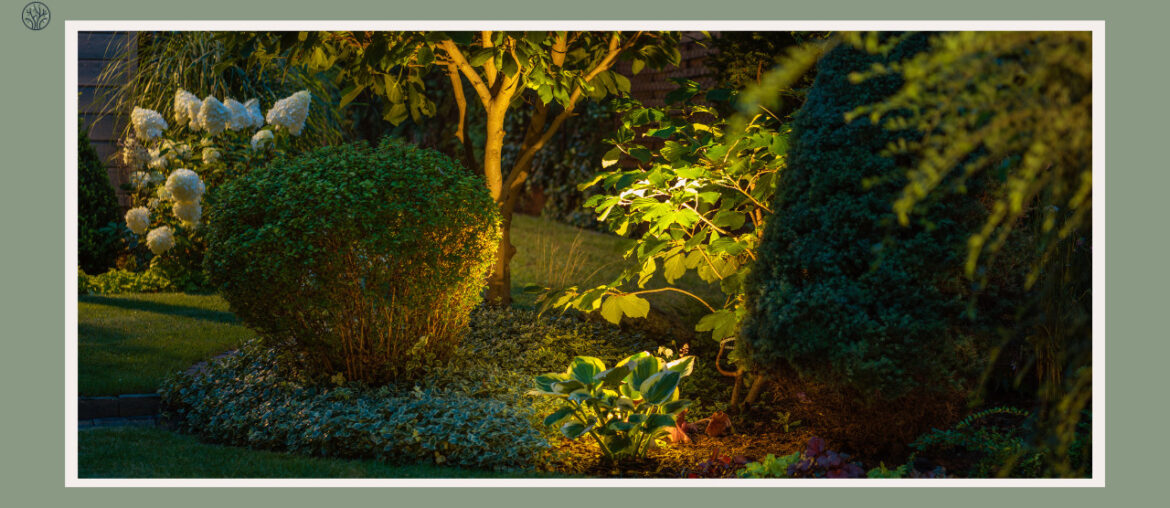We know that plants use sunlight to create energy through photosynthesis, a process that happens only during the day. But what about when the sun sets? Do plants stop growing and “sleep,” or do they keep growing?
The answer is yes, plants do grow at night. Instead of photosynthesis, they perform respiration, which is the process of breaking down the sugars they make during the day and releasing energy. This energy is then used to power various growth processes. Respiration is actually very important for plants, as it helps them use the energy they gather throughout the day to grow the most.
Key Takeaways
- Plants do grow at night. This growth is driven by plant hormones activated by darkness.
- At night, plants engage in respiration, using stored glucose to release energy, which is vital for their survival and growth.
- Different plants have varying light needs in terms of intensity, duration, and quality.
- Excessive artificial light can disrupt a plant’s natural growth cycles.
What Do Plants Do At Night?
Plants do not just rest and wait for the sun to rise again to start photosynthesizing. Instead, they have a variety of nocturnal activities that are crucial for their growth and well-being.
The Respiration Process

At night, plants engage in a vital process known as cellular respiration. Unlike photosynthesis, which requires sunlight, respiration happens 24/7.
During the night, plants use the glucose produced during the day to release energy. This process involves taking in oxygen and releasing carbon dioxide, a direct contrast to what happens during photosynthesis. This respiratory process is essential for maintaining the life of the plant, fueling cellular activities, and overall growth.
Growth Dynamics
Contrary to common belief, plants do grow when night falls. In fact, for many plants, nighttime is a period of significant growth. This phenomenon can be attributed to the plant hormones that are actively involved in growth processes. Darkness triggers these hormones, leading to cell growth. This is particularly evident in the rapid growth of seedlings as they stretch upwards, seeking light.
The absence of light activates certain phytochromes in plants, signaling them to grow faster and stronger. This growth dynamic is a critical aspect of a plant’s ability to adapt to its environment, ensuring survival and development even in the absence of sunlight.
Nightly Hydration
Nighttime serves as a crucial period for plants to manage their water needs efficiently. During the day, transpiration causes plants to lose a significant amount of water through their leaves. However, as night falls and temperatures drop, transpiration rates decrease, allowing plants to conserve water. This reduced water loss is vital for maintaining hydration and preventing dehydration stress.
Additionally, the cooler night air can lead to dew formation, providing plants with an additional moisture source. This nightly hydration routine is essential for maintaining turgor pressure in cells, which is crucial for keeping plants upright and aiding in the transport of nutrients and minerals from the soil.
Nocturnal Blooms
An enchanting aspect of plant life at night is the phenomenon of nocturnal blooms. Certain plants have evolved to open their flowers only after dusk, a strategy primarily aimed at attracting specific nighttime pollinators like moths and bats. Unlike some trees with vibrant color, these nocturnal blooms often have white or pale-colored flowers to become more visible in low light conditions.
This adaptation not only aids in successful pollination but also adds a unique dynamic to the plant’s growth cycle. The opening of flowers at night is a clear indication that plants still grow, even in the absence of sunlight. These nocturnal blooms highlight the intricate and adaptive nature of plant life, demonstrating their ability to thrive in varying environmental conditions.
How Much Night Plants Truly Need?
Light is an essential element for plant growth, but not all plants need the same amount or type of light. Light affects how plants perform photosynthesis, grow their leaves, and produce their flowers and fruits. Here are some factors that influence how plants respond to light.
Intensity and Duration
The intensity of light a plant requires depends on its native habitat and evolutionary adaptations. Sun-loving plants, such as succulents and many flowering species, need bright, direct sunlight to thrive. In contrast, shade-tolerant plants like ferns or moss, often found in forest understories, can grow with much lower light levels.
The duration of light exposure is equally important. Most plants are adapted to a natural rhythm of light and dark, mirroring the day-night cycle. This cycle regulates their internal biological clocks and influences processes like flowering and leaf movement.
Quality of Light
The light spectrum is another crucial factor. Contrary to common belief, plants do not need UV light. Instead, they primarily use blue and red wavelengths for photosynthesis.
Blue light promotes vegetative growth, leading to robust leaf development. Red light, on the other hand, is more influential in flowering and fruit production. The balance between these wavelengths can significantly affect a plant’s growth pattern and overall health.
Indoor Plant Considerations
For indoor plants, understanding light requirements is vital. Natural light through windows may be supplemented with artificial light to meet a plant’s needs. Grow lights, designed to provide a spectrum similar to sunlight, can be particularly beneficial in ensuring healthy growth.
Adaptability and Stress
Plants exhibit varying degrees of adaptability to light conditions. Some can adjust to lower light levels by changing leaf orientation or increasing chlorophyll concentration. However, insufficient light can lead to etiolation, where plants become leggy and weak. Conversely, too much light can cause photobleaching or sunburn, damaging the plant tissues.
In summary, the light needs of plants are as diverse as the plants themselves. Understanding these needs is crucial for gardeners and plant enthusiasts to ensure optimal growth conditions, whether in a natural outdoor setting or in controlled indoor environments.
How Light Pollution Impacts Plant Growth?
Light pollution, a byproduct of urbanization, has a significant impact on plant growth and ecological balance. Excessive artificial light, especially during the night, can disrupt the natural rhythms and processes of plants, leading to various growth-related issues.
Houseplants And Their Relationship With Man-Made Light
Houseplants, often situated in environments with varying degrees of artificial light, can be particularly affected by light pollution. While some artificial light can be beneficial, mimicking the sun’s spectrum to support photosynthesis, excessive or poorly timed artificial lighting can disrupt a plant’s circadian rhythm. This disruption can lead to issues such as stunted growth, premature flowering, or elongated and weak stems. Understanding the specific light requirements of each houseplant is crucial to mitigate the effects of artificial lighting and ensure healthy growth.
Balancing Natural And Artificial Sources
Achieving a balance between natural and artificial light sources is key to promoting healthy plant growth, especially in urban settings where natural light may be limited. Gardeners and plant enthusiasts should aim to provide plants with a light environment that closely resembles their natural habitat.
This includes not only the right intensity and spectrum of light but also adhering to a natural day-night cycle. Using timers on artificial lights, choosing the right spectrum of grow lights, and positioning plants to receive adequate natural light during the day are effective strategies to balance these light sources. By doing so, plants can maintain their natural growth rhythms and thrive even in urban environments with significant light pollution.
FAQs
Do plants grow more during the day or night?
Significant growth often occurs at night, driven by the plant hormones activated by darkness. This growth is typically in the form of cell elongation and division.
How fast do plants truly grow at night?
The rate of plant growth at night can vary, but it’s generally a gradual process. Growth rates are influenced by various factors, including the species of the plant, the availability of nutrients, and environmental conditions. Some plants may exhibit noticeable growth overnight, especially young seedlings and fast-growing species.
Do plants grow at night indoors?
Yes, plants do grow at night indoors, much like they do outdoors. Indoor plants continue to respire and grow in the absence of natural sunlight. However, the growth patterns may differ based on the amount and quality of artificial light provided, as well as the specific needs of each plant species.
Do tomato plants show night growth?
Tomato plants, like many other plants, do exhibit growth during the night. This growth is part of their natural response to the dark period, which is essential for their overall development. Tomato plants use the energy produced during the day through photosynthesis to support their growth processes at night, including stem elongation and leaf expansion.
Do plants grow at night in Minecraft?
The simple answer is yes, plants do grow at night in Minecraft. However, since plants need light to grow, at night you’ll need to place them near sufficient light levels. These can be either torch, redstone ramp, or whatever you want.









